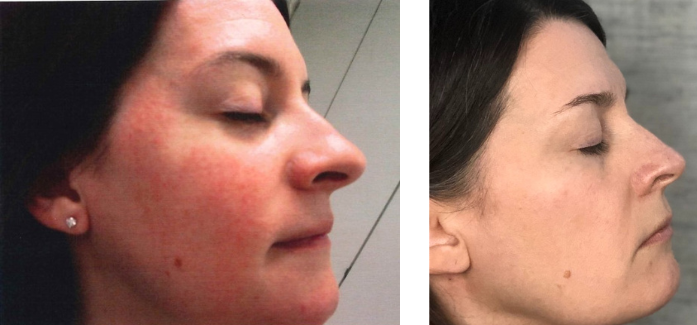Shannon L. Johnson NP-C, Founder and Formulator, MeridaSKIN

Avoidance of Irritants, Allergens and Pore-Cloggers
Ingredients with high irritation, allergy and pore-clogging potential are common in cosmetic products and topical medications in the United States. These products are often labeled or marketed as gentle or non-comedogenic, when in fact, a reasonable person could conclude that they are not. This means the consumer can’t rely on the language on the label or website. Unless a brand is transparent enough to share their patch testing results, the only true way to gauge a product’s gentleness is by scrutinizing the list of ingredients. For people with rosacea or other sensitive facial skin, it is important to consider haircare products as well as skincare products, since they also come in contact with the face. This list is not exhaustive, but here are some top offenders in each category of concern:
- Irritants: Glycols (e.g., butylene, propylene), phenoxyethanol, sulfates (e.g., sodium lauryl, sodium laureth)
- Allergens: Non-fatty alcohols (e.g., benzyl — cetyl, cetearyl and stearyl are ok), parabens (e.g., butyl, ethyl, methyl and propyl)
- Pore-cloggers: Coconut oil, cocoa butter, glyceryl stearate SE (non-SE is ok), isopropyl myristate, myristyl myristate, sodium chloride
Keep it Simple and Consistent
- Limit the number of products, and avoid products with a long ingredients list
- Wash face once or twice daily with lukewarm water and no washcloth or other abrasive
How to Approach Medication
I advocate 6-weeks of simple skincare, with irritant/allergen elimination, before deciding on medication for rosacea. If medication seems warranted at that point, start with topical medication. Oral antibiotics distribute to the entire body and disrupt the balance of gut and vaginal flora. In addition, the tetracycline antibiotics commonly used for rosacea are known for causing rash with sun exposure, and have hazards in pregnancy. The choice of topical medication depends what symptoms are most bothersome (e.g., background redness versus papules and pustules). Don’t forget that the carrier vehicle for the topical medication is likely to have irritating and/or allergenic ingredients.
Don’t Forget Sun Protection
Apply SPF30+ on top of moisturizer if sun exposure is expected. Look for a mineral-based product with zinc oxide as the active ingredient. Zinc oxide is soothing, provides broad-spectrum protection, and is one of only two sunscreen actives that have been designated by the U.S. FDA as safe and effective.

Shannon L. Johnson NP-C
Founder & Formulator, MeridaSKIN
Shannon is a nurse practitioner, and much of her career has served vulnerable populations at a community health center. She holds degrees from the University of Pennsylvania and Simmons University, and completed post-graduate training at the University of Massachusetts Boston. She tackled the science of cosmetic formulating to solve her own skin struggle with rosacea. Shannon was born in Oregon, raised in Eastern Massachusetts and has passionate ties to the Pacific Northwest, New England, and the mid-Atlantic. She lives on Boston's North Shore with her husband, two kids and mischievous Wheaten Terrier. She and her family pass the seasons by playing in water (liquid and solid).


Recent Comments